Tucked in the rolling hills of southern Napa County, Karen Rippey’s 716-acre property is a powerful example of what land management and restoration can achieve. Before Karen began her journey with California Department of Food and Agriculture’s Healthy Soils Program (HSP), one area of her property—a gulley—showed the harsh effects of overgrazing, leaving the soil eroded and unable to support new growth.
Identifying the Problem
When Karen first began to really consider the implications of the gulley, she had pressing questions: Was her land at risk of further damage? How was erosion affecting local waterways? These concerns moved her to take action, leading her to participate in the HSP.
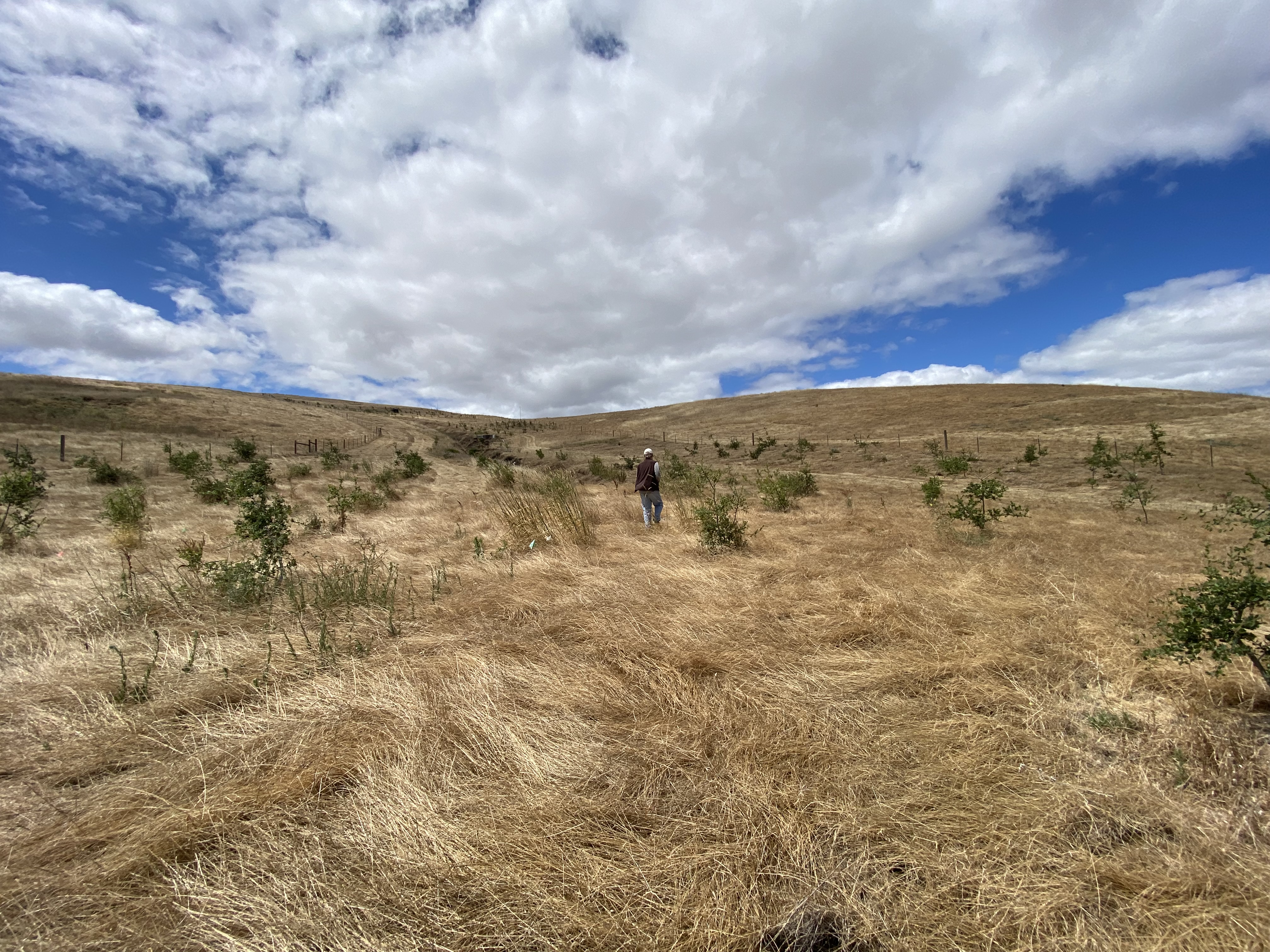
Wideshot of K. Rippey’s Property after first round of plantings in 2021.
The Restoration Process
With support of the HSP grant, Karen implemented erosion control and revegetation strategies on her property. Some areas of the land responded quickly – some plants took root and thrived. Other areas have been slower to respond, because the area was not suitable for the selected plants. “At first, I thought it was important to diversify the plant species,’ she explained. Due to application requirements, there was incentive to diversify plant pallets on your property to be considered for the program. ‘But because of the different soil types on my property, some plants thrived in places like the hillsides, but then struggled near the creek.”
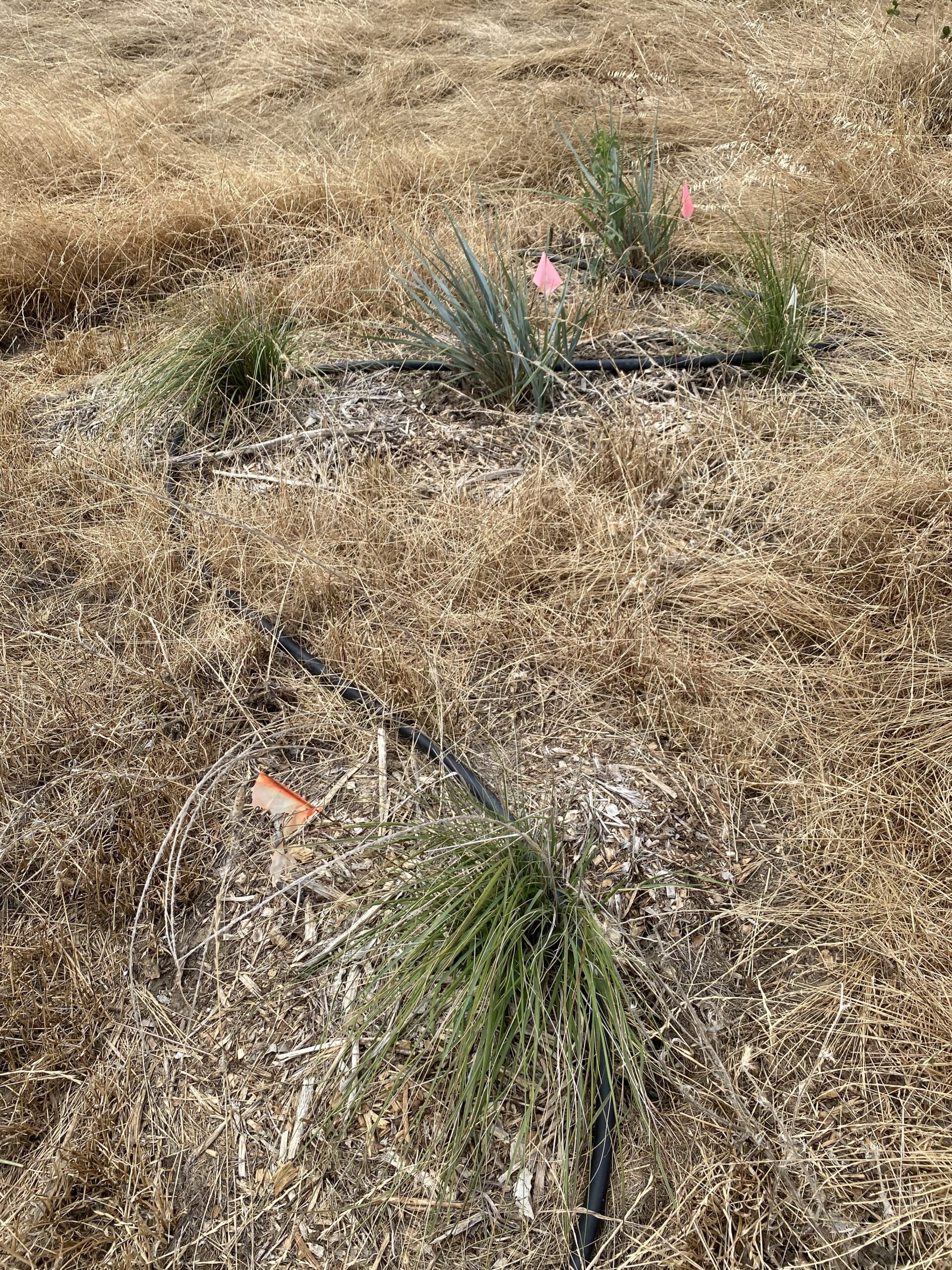

Native Grasses (left) and Live Oak seedlings (right) planted in 2021.
Of the fifteen native species she planted, six—oaks, buckeye, coyotebush, California live oaks, currant, and Fremont Cottonwood—took root across the property. Slowly, the land has begun to heal. Where soil once washed away, grasses now hold the ground, stabilizing the gulley that sparked Karen’s journey. Hedgerows along the property now see visits from small birds and wildlife.
Continued maintenance is required to help offset some of the impacts of these wild visitors!
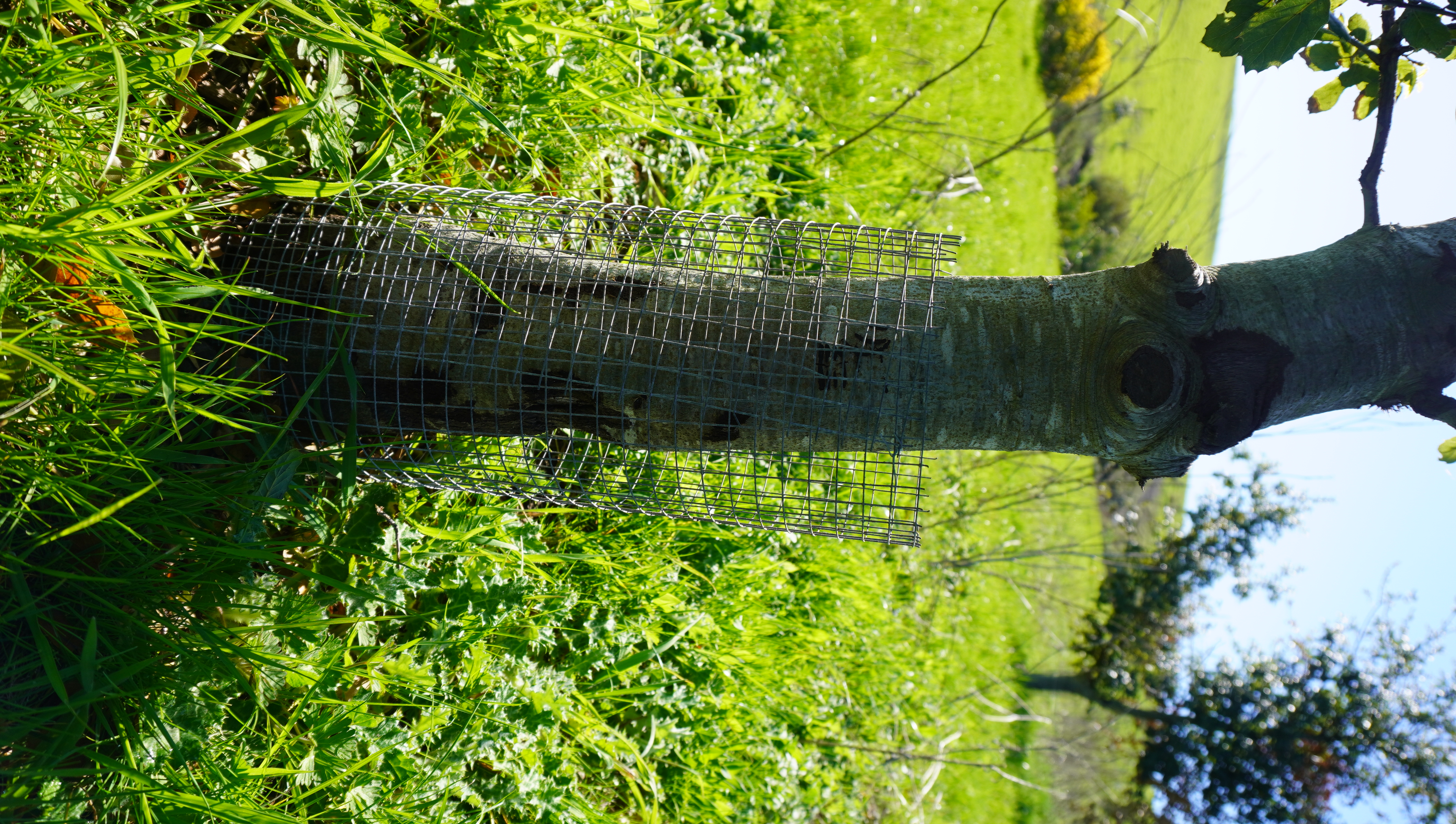
Karen has taken protective measures to conserve the work she’s implemented on her land. To the left, you’ll see a close up of wire caging around the base of a tree to protect the growing vegetation from being picked at by voles.
Continued protective measures will be required to save this tree.
Protective metal caging around tree trunk, 2024.
Expanding Efforts
Encouraged by the building success, Karen expanded her restoration work by partnering with the Napa RCD and other local agencies on other projects. She took part in the Environmental Quality Incentives Program (EQIP) through the Natural Resources Conservation Service (NRCS), implemented a Pollinator Habitat Plan with Napa RCD using plants sourced from the Xerces Habitat Kit Program, and the U.S. Forest Service’s Western Monarch Habitat Projects. These collaborations have helped strengthen the land’s resilience on Karen’s property and increased habitat for local wildlife.
A Lasting Impact
For Karen, the changes aren’t just visible—they’re felt in the soil, the water, and the mini ecosystems on her property. Healthier soil, improved water quality, and increased biodiversity environment all point to the land’s resilience and healing.
Karen’s biggest takeaway to share? The ongoing care these projects require. “Many people don’t realize how much work is involved,” she said. But her motivation was clear: “my land was very scarred before…there was barely any vegetation around areas like my gulley, but the land has filled in. Grasses are growing, and I can see the difference on my property.”
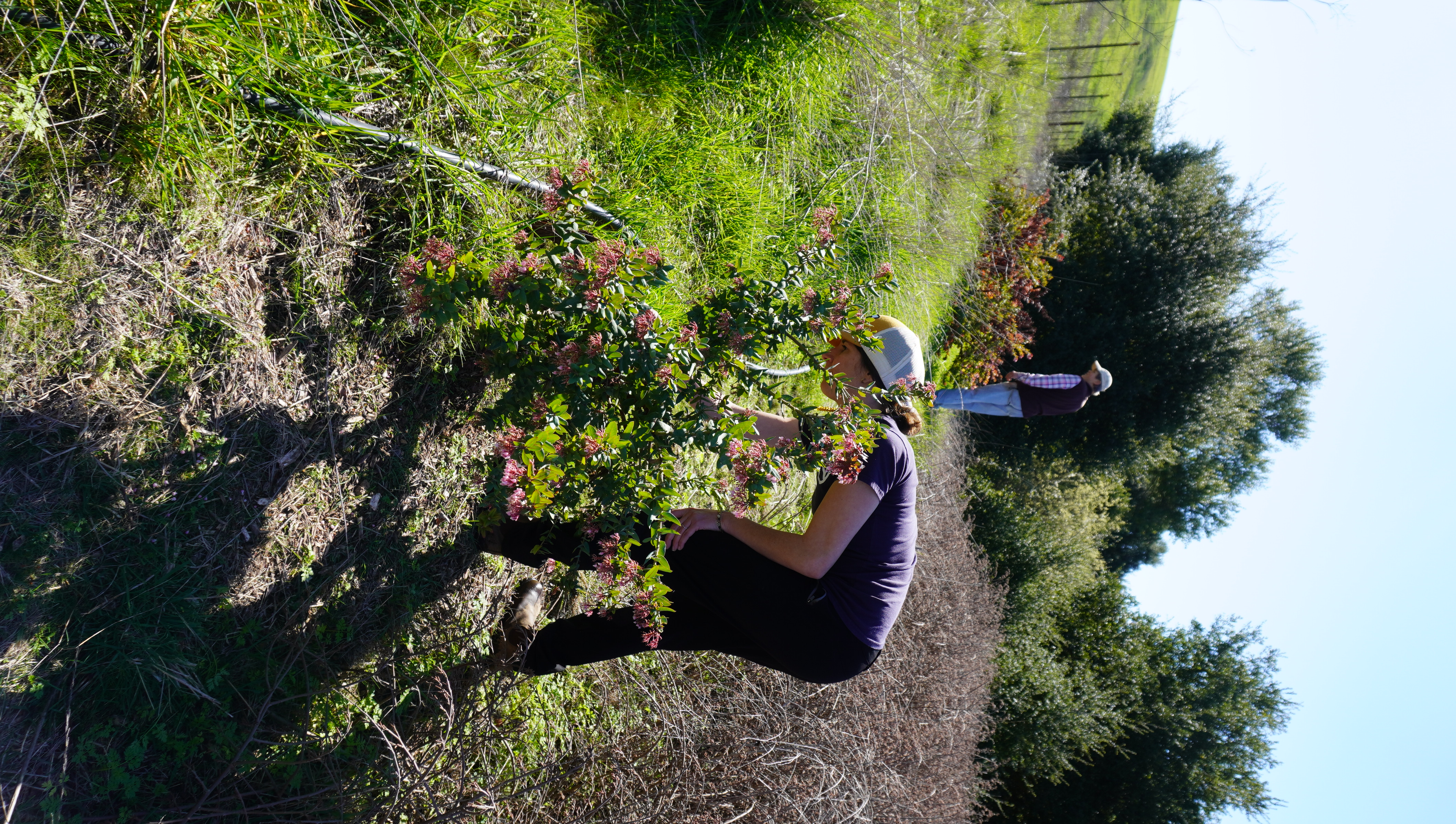
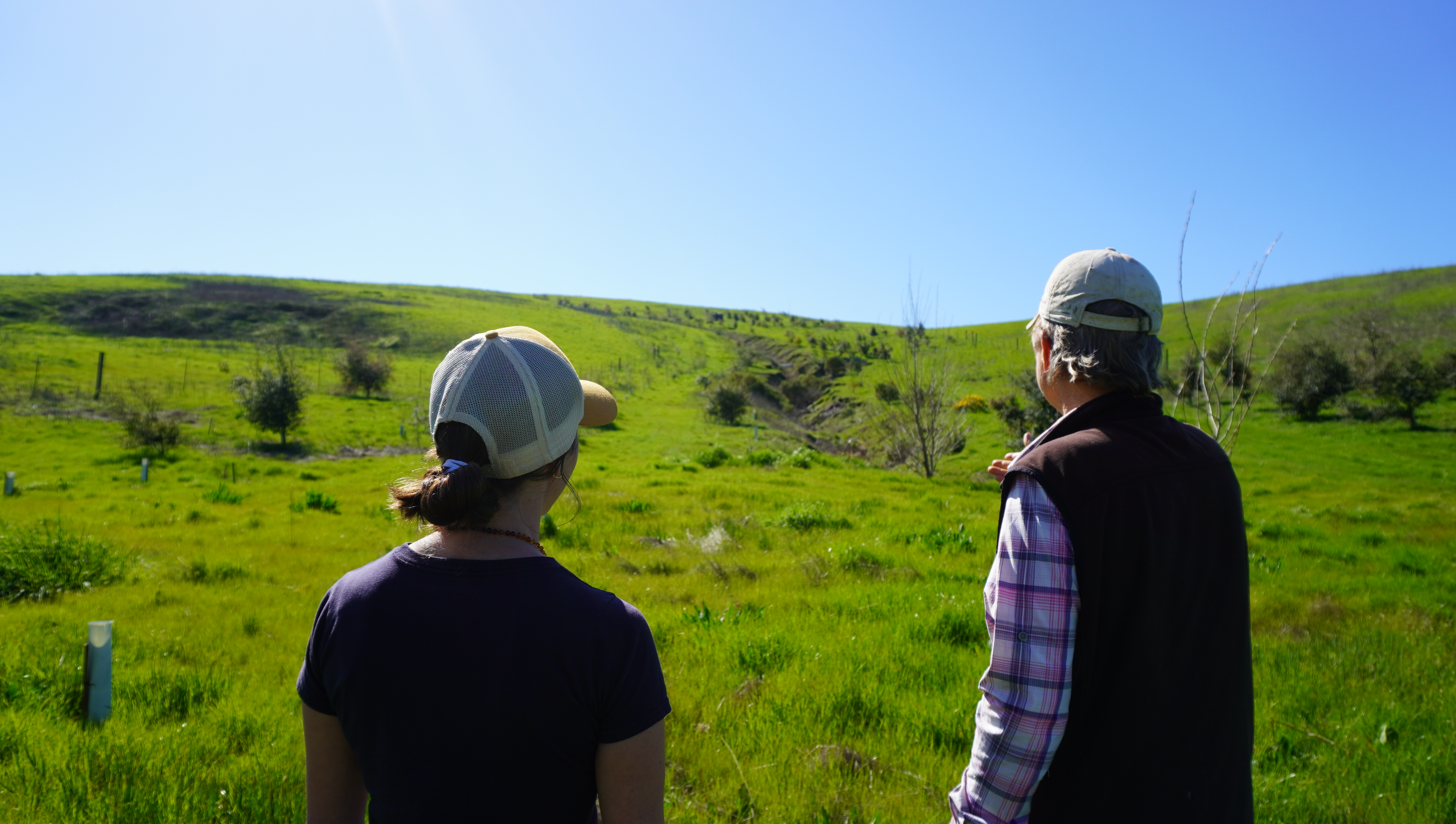
Napa RCD site visit tracking progress of program implementation, 2025.
Advice for Others
For those considering similar projects, Karen’s advice is simple: “If you want to create more wildlife habitat on your property, work with the RCD.”
Her journey highlights an important truth in conservation—it’s a long process, full of successes and challenges. As Karen’s land starts to see new growth, it serves as a reminder that restoration is possible, one step at a time.
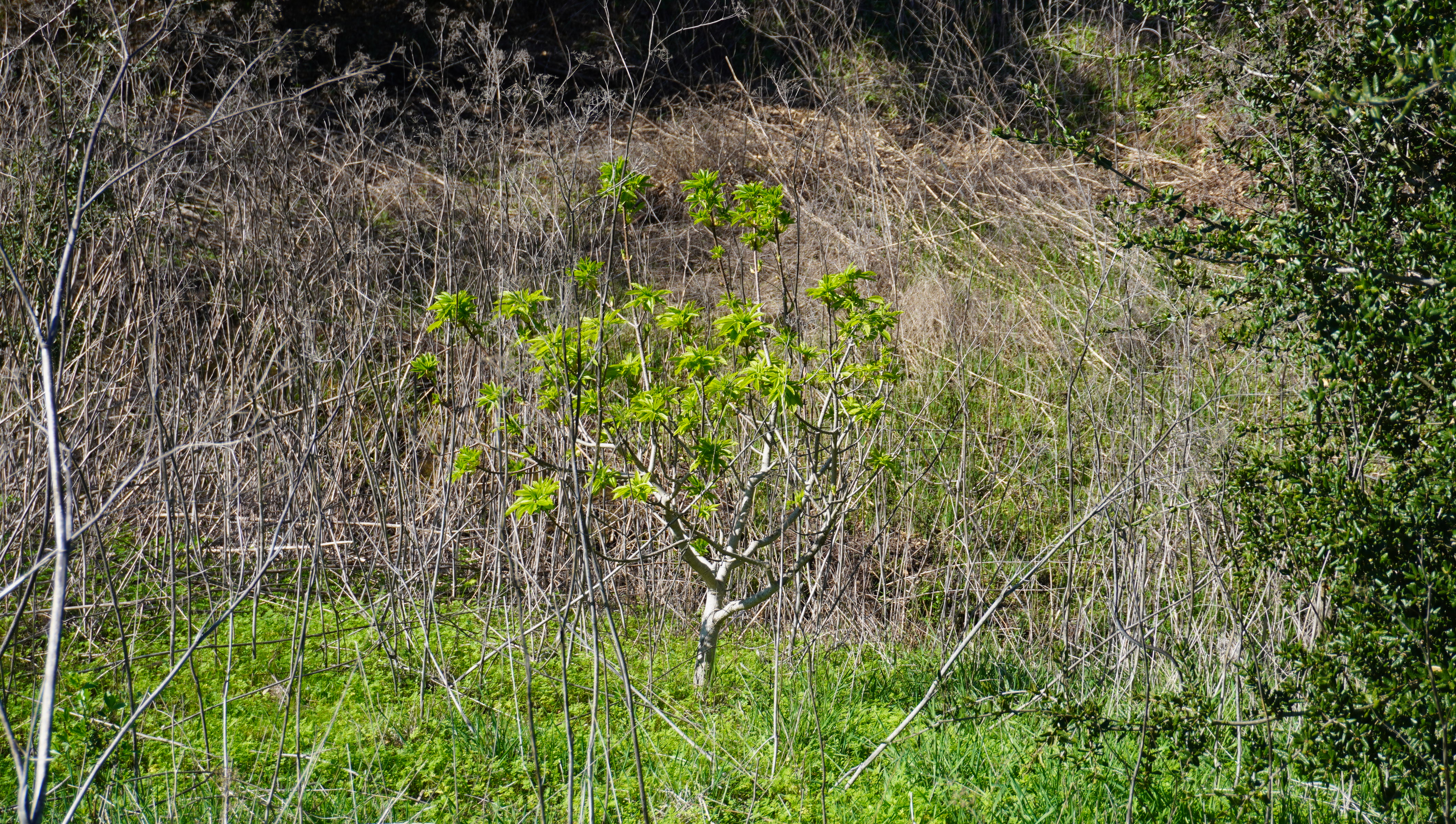
Buckeye tree from HSP plantings growing among dead vegetation on property, 2025.
